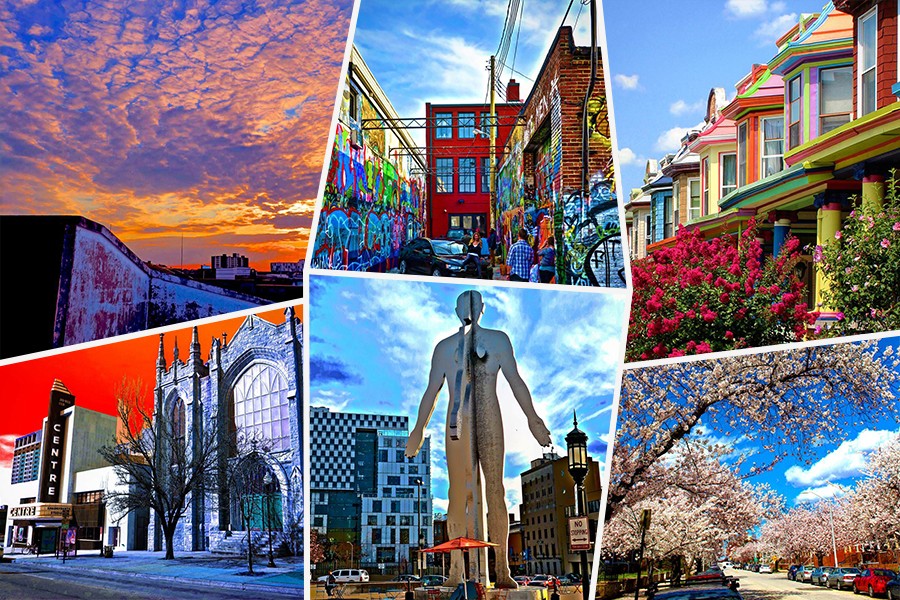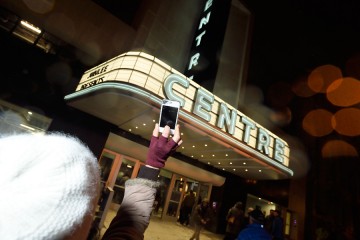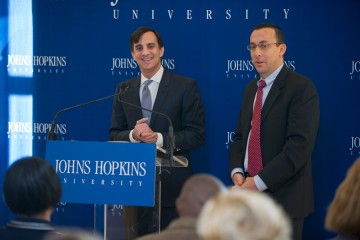A speakeasy tucked away on a side street. Art galleries and artist studios. A shop selling handmade haircare products. Murals and art installations. A bustling farmer's market. A butcher's shop. And many dozens of restaurants, bars, and music venues.
The center of Baltimore is studded with fascinating places to explore, but the area is often overshadowed by the neighborhoods downtown and along the waterfront. Now, a new marketing campaign aims to draw attention to the city's vibrant and culturally diverse heart.
The campaign, called "Explore the Core," kicks off Saturday with a traveling party bus that will bring music, entertainment, and prizes to the Waverly Farmer's Market and several other neighborhoods. With substantial support from Johns Hopkins University and the Central Baltimore Partnership, the campaign aims to highlight the pleasures of visiting—and living in—the 10 neighborhoods near the university's Homewood campus.
"We're making the statement that this is an up-and-coming part of Baltimore," said Jacqui Lampell, communications director for the Central Baltimore Partnership, a consortium of neighborhood groups. "Many people have heard of the Station North Arts and Entertainment District, they've heard of the anchor institutions,"—Hopkins, University of Baltimore, and the Maryland Institute College of Arts—"but maybe they haven't seen this area as a destination. We want them to be excited to come visit."
The campaign is an outgrowth of the Homewood Community Partners Initiative, or HCPI, JHU's ongoing effort to work with local stakeholders to attract 3,000 new households to the 10 neighborhoods: Abell, Barclay, Charles North, Charles Village, Greenmount West, Harwood, Oakenshawe, Old Goucher, Remington, and Wyman Park, as well as the Waverly Main Street area. The university is spending at least $10 million over five years to help advance goals drawn up by community leaders and residents, such as improved schools and public spaces.
"Hopkins has a moral obligation, dating back to its founder, to support the communities around it," said Andrew B. Frank, Hopkins' special advisor to the president for economic development. "The strength of the neighborhoods and the health of Hopkins are inextricably linked."
Collectively, the HCPI neighborhoods have been thriving in recent years, attracting new residents, businesses, and investments, said Salem Reiner, Johns Hopkins' associate director of economic development. Over the past four years, 765 new housing units have opened in the area, and hundreds more are planned. The number of vacant properties was cut in half, far better than the rate for the city as a whole. More than $644 million in capital improvements have been made since 2012, and $200 million more capital projects are planned over the next few years. Nearly two dozen restaurants, shops, and arts venues, as well as more than 100,000 square feet of office space, opened in just the past year.
But community leaders felt they were struggling to get out the message of all the good things happening in their neighborhoods. Many of the community associations lacked the funds to promote events, amenities, and housing opportunities.
So the university, in conjunction with the Central Baltimore Partnership, hired local marketing firm MGH to create a campaign touting the communities. A video premiered last week, and a Facebook page and website will share information on events and local businesses. The team aboard Saturday's party bus will hand out t-shirts and other materials to promote the campaign.
In addition to helping the community, the "Explore the Core" effort will help Hopkins admissions and human resources staffers introduce prospective students and employees to the surrounding communities. And, for students, the website will be a guide to interesting places to check out during their free time.
"Hopefully people who look at this will become ambassadors," Reiner said. "They can share the information and get others excited about what's going on here."












